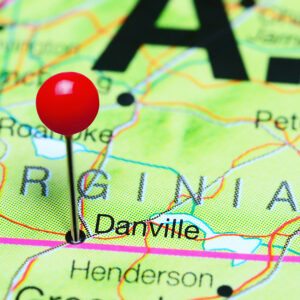Millennials are supercharging the U.S. housing market. They have lots of cash, and they’re making a dash for cities like Boise, Idaho, Raleigh, N.C., Tampa, Fla., and Austin, Texas.
As home mortgage rates rise and inventory shrinks in those and other A-list cities, millennials, particularly those who can work remotely, might want to consider C-list — C for cheap — cities.
Hey, millennial. Don’t be bummed about being outbid for that pricey “adorable vintage house within walking distance to entertainment” in Austin (actually, a teardown with a honky-tonk a few yards from the back porch). Be cheered that Wall Street 24/7, a news and financial site, has just released a special report entitled “The Cheapest City to Buy a Home in Every State.”
If you’re a pioneering millennial, here are a few cities in the report:
Gary, Indiana could be “your home sweet home” — just like the line from the song in “The Music Man,” which was a hit on stage and screen long before you were born. The median home value is $66,000. Cheap homes abound in this not-so-cheerful city.
Flint, Michigan. The fact that you can’t drink the water is no problem for you because you’ve only ever drunk bottled water. The median home value is $29,000. If you decide to buy a home there, keep buying bottled water from fresh municipal springs — in other states.
Camden, New Jersey. There is great news for home buyers. Trenton has taken the “Murder Capital of New Jersey” title away from Camden, a perennial titleholder. The median home value in Camden is a bargain $84,000 versus $335,600 for New Jersey. Camden is downriver from Trenton, so mind the floating corpse risk.
Minot, North Dakota. It’s a hot market: The median home value is $208,700 versus $193,900 for the state. As for temperature, it’s not. A school friend from Minot told me the saying there was, “Why not Minot? Because freezing is the reason.” Look at those months of frigid temperatures as being the reason to get more wear out of your chichi Canada Goose Expedition Parka.
East St. Louis, Missouri. One resident, in a review on the Niche site, wrote, “I didn’t like all of the abandoned homes and buildings. It looked like the area isn’t livable and then two houses down, it is livable.” The Niche reviewers give the city bad marks for violence, but great ones for the high school football team and the diners. The median house value is $54,000.
The city that really caught my eye in the report was Danville, Virginia – a state where I lived for most of my life.
For years, because I’m interested in architecture, I’ve pored through listings on historic house sites. Recently on one site, there were many dilapidated Victorian houses listed in Danville’s Old West End, priced from $15,000 to $55,000.
For much of its history, Danville was a D-list city – D for disreputable. This tobacco-processing and textile-manufacturing city’s reputation rolled downhill for a century, from the Civil War (where it was major center of Confederate activity; and was the “Last Capital of the Confederacy” from April 3-7, 1865) to “Bloody Monday,” the name given to a series of arrests and brutal attacks that took place during a nonviolent protest by Blacks against segregation laws and racial inequality on June 10, 1963. Of the protests, leading up to the March on Washington on Aug. 28, the Rev. Martin Luther King Jr. preached, “As long as the Negro is not free in Danville, Virginia, the Negro is not free anywhere in the United States of America.”
Danville’s work in recent decades to create a new identity is paying off. The median home value is $90,500. The city is attracting high-tech companies and millennial workers – new residents who will continue its transformation from disreputable to desirable.

